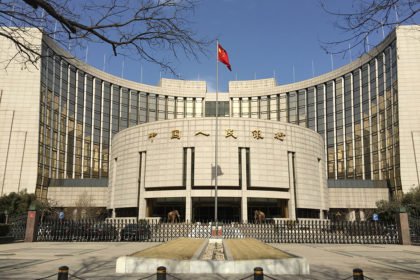The testing phase of a new blockchain trade finance platform established by the People’s Bank of China has been officially launched.
According to the information provided by the local media, the Shenzhen Central Sub-branch of the People’s Bank of China, the central bank of the People’s Republic of China, has initiated the testing phase of its blockchain trade finance platform.
The platform is known under the name “Bay Area Trade Finance Blockchain Platform” and represents itself a solution for facilitation of financial transactions, as well as trading and enhancement of interbank transactions.
The platform is able to allow conducting of a range of financial activities including accounts receivable and financing activities. Moreover, it can offer a complex trade finance regulatory system that provides an opportunity to monitor financial activities in real time.
Owing to the platform and the ability of a distributed network to ensure data sharing between its participants, small- and medium-sized businesses can get access to a great range of financing tools, such as asset-backed securities.
As for local regulators, they will also get some obvious benefits from the platform’s potential. Due to higher level of transparency of all transactions and data shared, it will be possible to execute high-quality oversight. It means that risk control and fraud prevention activities will become more efficient.
It is reported that a number of financial institutions in the southern city of Shenzhen has already deployed the first phase of Bay Area Trade Finance Blockchain Platform and currently, final trials are taking place.
The development and launch of such a platform was a joint initiative of the Digital Currency Research Lab of the People’s Bank of China and the bank’s Shenzhen branch. But it is important to add that the project was positively welcomed and supported by a group of the country’s major commercial banks, which includes the Bank of China, the Bank of Communications, China Merchants Bank, Ping’An Bank and Standard Chartered.
It is far not the first blockchain-based initiative of Chinese institutions seeking for implementing new technologies with a view to revolutionize their common processes and services. This year, Ping An Insurance, which is one of the leading insurance and financial services providers in China, published a “Whitepaper on Smart Cities”. The document reads about possible ways to implement blockchain, AI, IoT and cloud computing for creation of a cutting-edge smart city.
The Chinese government has serious plans for wide usage of the modern technologies and developments. There is already a number of initiatives that can prove it. For example, in July it was announced that Nanjing had launched a $1.5 billion blockchain investment fund to support the development of the token economy and public blockchain projects in the country.
Speaking about other examples of utilizing modern technologies by Chinese institutions, it is impossible not to mention that the third largest bank in China in terms of total assets, Agricultural Bank of China, reported its successful completion of a $300,000 loan granting via a blockchain system.
next